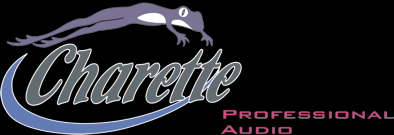 |
 |
|
 |
 |
|
A few of Charette Pro Audio's project involvements.
Within this section, there are some pics and comments about a few of the myriad of the projects that Charette Professional Audio has been involved with over the years. As the name of the company would suggest, the projects generally relate to the professional audio field. One of our specialties has been the design, construction and implementation of the multi-channel cabling systems used in concert sound systems and recording studios. We also have wide range of experience with the design of electronic circuitry focused on audio processing including analog preamp and dynamic circuits with microcontroller digital control. On top of that, there have been some fun recording adventures to try and capture some unique and different sounds. Shown below are some odds and ends that will hopefully clarify what we're all about. If anything, at least there are some crazy Doc Brown style laboratory and experiments pics for a little fun. Enjoy! |
||
| Ambience Therapy ATS-1 | Versatile Audio Matrix | American Gramaphone Euphonix Cube Install |
| NASA KSC Space Shuttle Surround Recording | Omaha Zoo Tiger VLF Vocalization Recording | Black Duck Minnesota Loons Recording |
| 24 Channel Mic Splitter | Portable Stage Snake | Guaca Maya Audio Wiring |
| CNC Machine | MIDI Data Recorder | Parabolic Mic Preamp |
| DCO Sine Oscillator | Six Chan. Headphone Amp | |